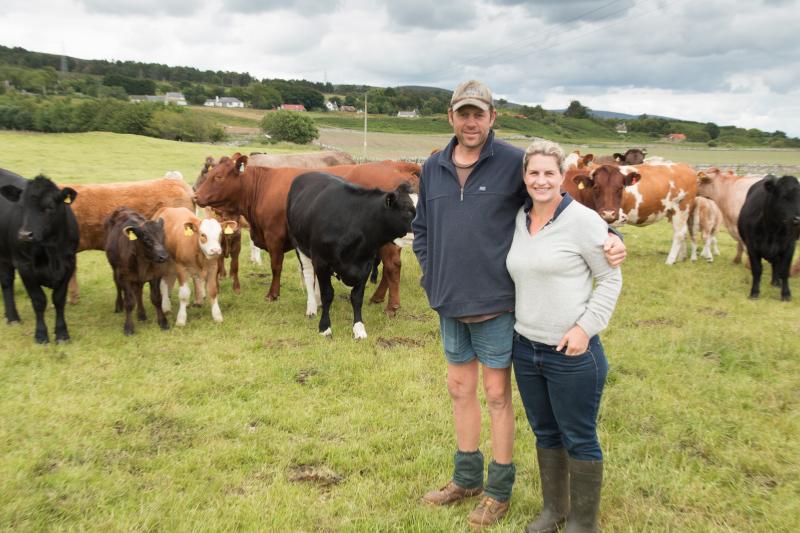
Optimising farming systems has emerged as the stand out theme of the first year of the Monitor Farm Scotland programme.
Every one of the nine farms in the programme has been working hard to ensure they have the right systems in place for their farm, and are then reviewing elements with their farmer business groups to ensure they are as efficient as possible.
Nine monitor farms have been established in Scotland last year as part of a joint initiative by Quality Meat Scotland (QMS) and AHDB Cereals & Oilseeds with funding from the Scottish Government.
Monitor farms can be found in Nithsdale, Scottish Borders, North Ayrshire, Lothians, Angus, Lochaber, Morayshire, Sutherland and Shetland.
AHDB Monitor Farms aim to bring together groups of like-minded farmers who wish to improve their businesses by sharing performance information and best practice around a nationwide network of host farms.
“It’s really heartening to see all our farms are making the most of this opportunity to ensure their enterprises are sustainable in the long-term,” said Gavin Dick, AHDB Cereals & Oilseeds Knowledge Exchange Manager.
He added: “Across the entire programme we are seeing practices reviewed and tightened up, both in arable and livestock, and all the farms have business groups which are benchmarking so they can compare both where they are performing strongly and also where they might be lagging behind.”
Grass management
Many of the farms have focused on grass management, both in terms of grass quality and in the use of rotational grazing for both cattle and sheep.
Sutherland Monitor Farm is one of the farms which has tested the nutritional quality of the grass itself, rather than focusing solely on the soil.
Monitor farmer Victoria Ballantyne explains: “We are so reliant on our grass to provide almost everything our cattle and sheep need, we run a low input system with animal performance coming almost entirely from forage so we need our grass to be high quality.
“Soil testing is important, but we wanted to better understand what the animals were actually eating and how we could improve it.”
'Soilmyundies'
Like grassland, soils have also been an important element for all nine farms with many carrying out work to improve the structure and nutrients in both pasture and arable soils.
Many farms have been trying out the popular #soilmyundies experiment, burying cotton underpants and digging them up eight weeks later with more the degraded underpants indicating healthier soils.
Livestock management has also featured heavily this year with many farms assessing diet and nutrition, handling facilities, health, weaning and fertility.
The Angus Monitor Farm is currently considering fairly major changes to its herd and has been reviewing its breed, calving system, selling store or fat and the benefits of AI versus natural service.
Monitor Farmer Rob Stodart says: “I think 2018 will see changes to how we farm here at The Mill. We need to ensure we are working as efficiently as possible and we’re really open to new ideas and hearing other farmers’ experiences to help us decide the future of the herd.”
'Vital support'
QMS Head of Industry Development Doug Bell says he believes that programmes like these provide vital support to farmers and growers building sustainable and productive businesses.
“Sharing information and best practice is at the heart of the programme. There is no doubt that the most effective knowledge exchange takes place between farmers. ‘Been there, done that’ experiences add credibility to messages which practical farmers really value,” said Mr Bell.
“The last 12 months have seen unprecedented levels of communication within and between the Monitor Farm community groups all with the common goal of improving the bottom line and long term sustainability,” He added.
